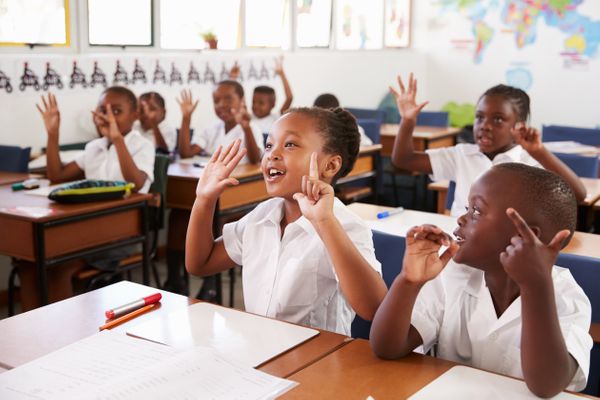2.3.1
Processes
Stereotyping, Pupil Identities and the Halo Effect
Stereotyping, Pupil Identities and the Halo Effect
Labelling and stereotyping, as well as wider teacher-pupil interactions, can influence the construction of positive and negative pupil self-concepts (pupil identities).


Stereotypes
Stereotypes
- Stereotypes held by teachers might include labels such as bright or slow learner, conformist or disruptive, hard working or lazy.
- These stereotypical impressions can result in teachers making assumptions about pupils that are often wrong.
- For example, assuming that a 'well-behaved' pupil is also 'hardworking'.


The ‘halo effect’
The ‘halo effect’
- This phenomenon is known as the ‘halo effect’.
- Waterhouse (2004), carried out a case study of four primary and secondary schools, finding that teacher labelling of pupils as either normal/average or deviant types (as a result of impressions formed over time) has implications for the way teachers interact with pupils.


Waterhouse
Waterhouse
- Once these labels are applied and become the dominant categories for pupils, they can become what Waterhouse terms a ‘pivotal identity’ for students.
- That is, a core identity providing a pivot that teachers then use to interpret and reinterpret classroom situations and student behaviour.


'Pivotal identities’
'Pivotal identities’
- These ‘pivotal identities’ can then lead to various pupil responses, including conflict, confrontations and the formation of a range of pro-social and anti-social subcultures.
Stereotyping of the ‘Ideal Pupil’
Stereotyping of the ‘Ideal Pupil’
Labelling and stereotyping, as well as wider teacher-pupil interactions, can influence the construction of positive and negative pupil self-concepts (pupil identities).


Research
Research
- Howard Becker (1971) concluded that teachers initially evaluate pupils in relation to a stereotype of the ‘ideal pupil’ (e.g. conformist, hard-working, etc.)
- Amelia Hempel-Jorgensen found that many pupils share a similar stereotype of the ‘ideal learner’.


Consequences
Consequences
- Such stereotypes can influence academic assessments of pupil abilities and influence teacher expectations of pupils, such as to which ability stream or set the pupil belongs.
1Theory & Methods
1.1Sociological Theories
1.2Sociological Methods
2Education with Methods in Context
2.1Role & Function of the Education System
2.2Educational Achievement
2.3Relationships & Processes Within Schools
3Option 1: Culture & Identity
3.1Conceptions of Culture
3.2Identity & Socialisation
3.3Social Identity
3.4Production, Consumption & Globalisation
4Option 1: Families & Households
4.1Families & Households
4.2Changing Patterns
4.3The Symmetrical Family
4.4Children & Childhood
5Option 1: Health
5.1Social Constructions
5.2Social Distribution of Healthcare
5.3Provision & Access to Healthcare
5.4Mental Health
6Option 1: Work, Poverty & Welfare
6.1Poverty & Wealth
7Option 2: Beliefs in Society
7.1Ideology, Science & Religion
7.2Religious Movements
7.3Society & Religion
8Option 2: Global Development
8.1Development, Underdevelopment & Global Inequality
8.2Globalisation & Global Organisations
8.3Aid, Trade, Industrialisation, Urbanisation
9Option 2: The Media
9.1Contemporary Media
9.2Media Representations
10Crime & Deviance
10.1Crime & Society
10.2Social Distribution of Crime
Jump to other topics
1Theory & Methods
1.1Sociological Theories
1.2Sociological Methods
2Education with Methods in Context
2.1Role & Function of the Education System
2.2Educational Achievement
2.3Relationships & Processes Within Schools
3Option 1: Culture & Identity
3.1Conceptions of Culture
3.2Identity & Socialisation
3.3Social Identity
3.4Production, Consumption & Globalisation
4Option 1: Families & Households
4.1Families & Households
4.2Changing Patterns
4.3The Symmetrical Family
4.4Children & Childhood
5Option 1: Health
5.1Social Constructions
5.2Social Distribution of Healthcare
5.3Provision & Access to Healthcare
5.4Mental Health
6Option 1: Work, Poverty & Welfare
6.1Poverty & Wealth
7Option 2: Beliefs in Society
7.1Ideology, Science & Religion
7.2Religious Movements
7.3Society & Religion
8Option 2: Global Development
8.1Development, Underdevelopment & Global Inequality
8.2Globalisation & Global Organisations
8.3Aid, Trade, Industrialisation, Urbanisation
9Option 2: The Media
9.1Contemporary Media
9.2Media Representations
10Crime & Deviance
10.1Crime & Society
10.2Social Distribution of Crime
Unlock your full potential with Seneca Premium
Unlimited access to 10,000+ open-ended exam questions
Mini-mock exams based on your study history
Unlock 800+ premium courses & e-books




